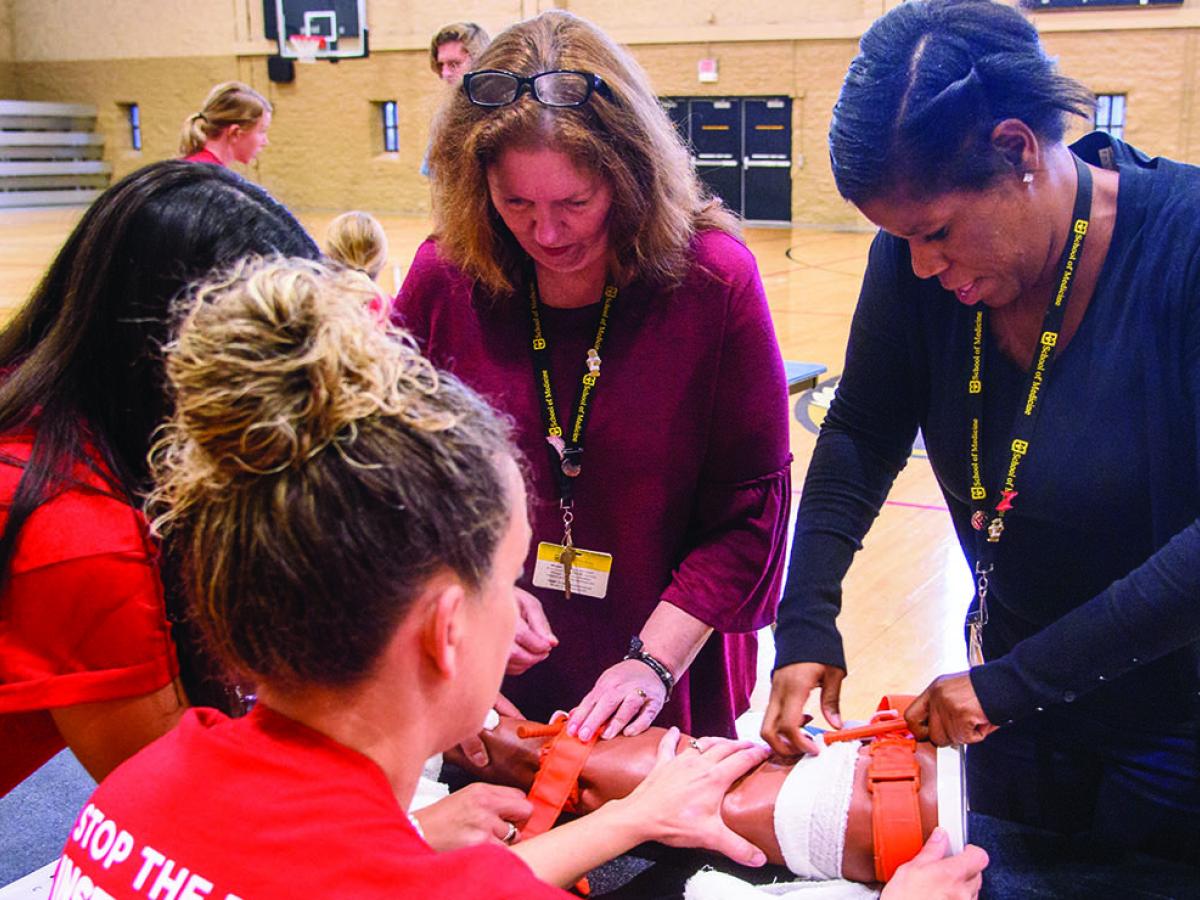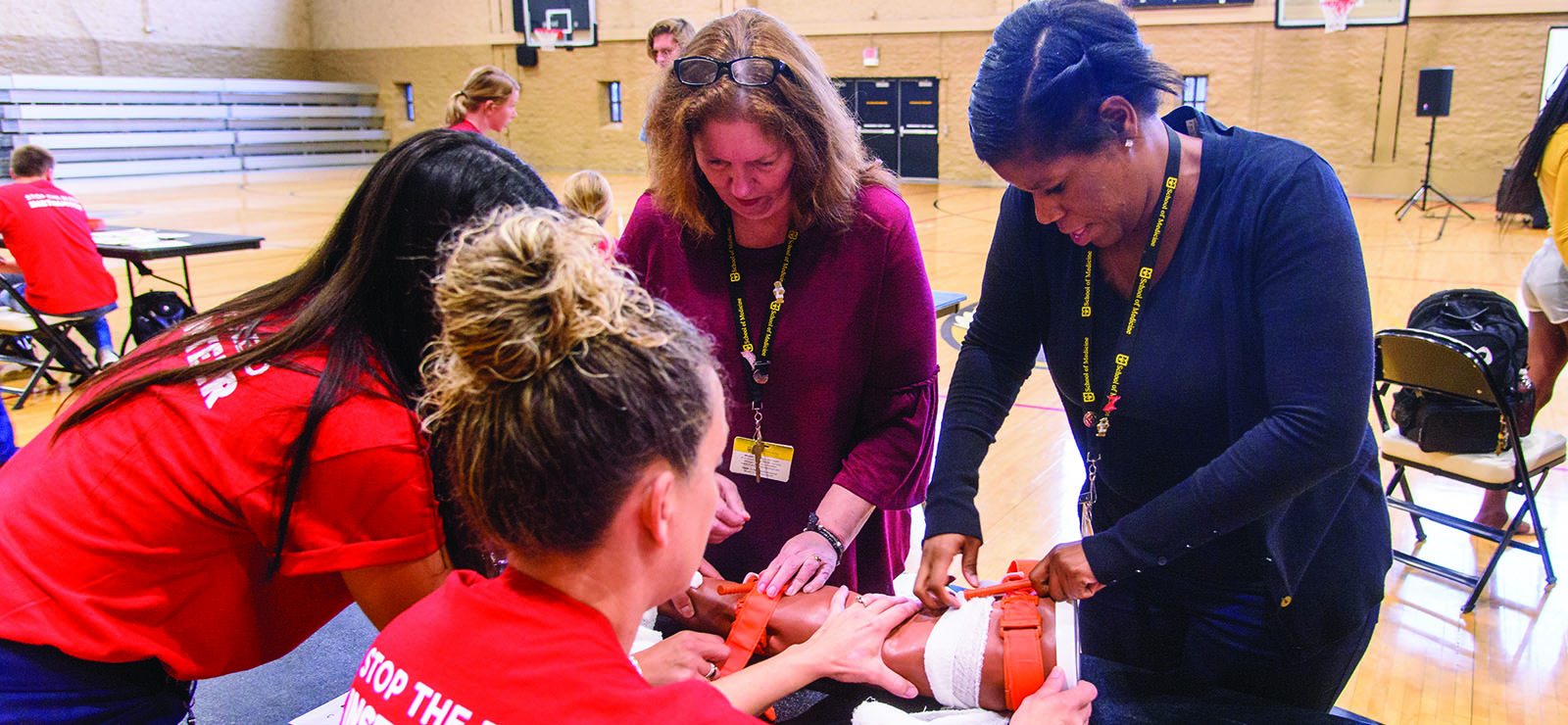October 25, 2021

These days, there's not much you can't learn online:
How long until cooked chicken goes bad? Google it.
What's the best way to unclog a drain? Watch YouTube video.
Where's the closest gas station? Ask Alexa.
But when it comes to acting quickly in a medical emergency, searching for the right response could cost you precious, lifesaving minutes. The good news? It's relatively easy to learn the basic first aid skills and information needed to handle such an emergency. To get you started, we've outlined five lifesaving techniques to master:
1. Performing CPR
For a lot of people, exposure to CPR (cardiopulmonary resuscitation) is limited to what they see in the movies or read about in health class. But each year, about 350,000 Americans are away from a hospital when their heart stops beating (cardiac arrest). About 90% of those people don't survive. One of the main reasons: it often takes time for emergency medical services (EMS) to arrive on the scene. But if you can perform CPR within three minutes of someone's heart stopping, you can double or even triple their chances of survival. Just think, if everyone knew CPR, we could save about 315,000 lives a year. The Red Cross offers CPR training courses both online and in-person to help you master the basics.
Hands-only CPR
Experts still recommend the conventional method of CPR (chest compressions plus breathing) for many situations. But it's not the only method. If you see an adult suddenly collapse, hands-only CPR is an effective and easy-to-perform alternative. It uses only chest compressions, and if you can perform them to the beat of "Stayin' Alive" by the Bee Gees or "Crazy in Love" by Beyonce featuring Jay-Z, you can save a life.
Keep in mind, any attempt at CPR is better than no CPR. If you see an unconscious and unresponsive adult and don't know traditional CPR, call 9-1-1 and begin hands-only CPR. Learn how to perform hands-only CPR through MU Health Care's Save MO Hearts program.
2. Stopping a bleed
Almost everyone deals with minor bleeding from time to time. Apply pressure to the cut, clean it and slap a bandage on it. It's not really a big deal. But knowing how to stop heavy bleeding after a traumatic injury or accident is a much bigger deal — in fact, it can be lifesaving.
Bleeding related to a traumatic injury is the leading cause of death in Americans between the ages of 1 and 46 years old. A "Stop the Bleed" training session can teach you when to call 9-1-1, how to identify the signs of shock, and how to effectively apply compression and a tourniquet.
Once bleeding stops, the wound may still require medical attention, especially if the wound is:
- Caused by the bite of a human or animal
- Contaminated by a dirty or rusty object
- Gaping or the edges can't be pressed together
3. Executing the Heimlich maneuver
Imagine… one minute you're enjoying that mozzarella stick, and the next, you're gasping for air, trying to cough the stringy cheese up and out. Most of the time, a strong cough will do the job. But when it doesn't, choking can be scary — and have devastating effects. That's when the Heimlich maneuver may save the day.
The Heimlich maneuver uses abdominal thrusts to lift the diaphragm, push air from the lungs and expel the object from the airway. But you'll need to act quickly with choking — brain cells begin to die within five minutes after the oxygen supply is cut off, and the result can be brain damage or death.
The Heimlich maneuver may not always be the right response, especially if the choking person is obese, late-stage pregnant or an infant. Seek out training through a first aid or CPR course to learn when and how to properly use the technique.
4. Using an EpiPen
Every three minutes, a life-threatening reaction to a food allergy (anaphylaxis) sends someone to the emergency room. But an EpiPen, which injects epinephrine (adrenaline) into the thigh, works in minutes to stop the reaction in its tracks and reverse the symptoms of anaphylaxis. The only problem? Most people don't know how to use an EpiPen correctly.
In a 2015 study, only 16% of the people prescribed an EpiPen could use it effectively. They either didn't hold the auto-injector in place long enough, pressed the wrong end into the thigh or didn't use enough force. With 32 million Americans having food allergies, learning to use an EpiPen correctly may come in handy. The Red Cross offers an online training course that takes just 30 minutes to complete.
5. Spotting the signs of a stroke
Every four seconds, someone in the United States has a stroke, which happens when something blocks the blood supply to the brain or when a blood vessel in the brain bursts. While most people associate stroke with the elderly, it can happen anytime, anywhere, to anyone. In fact, nearly 25% of strokes occur in people younger than 65.
Fortunately, when a stroke victim gets medical treatment within three hours of the first symptoms, the chances of brain damage and long-term disability are much lower.
Quick stroke test
If you suspect someone is having a stroke, remember to B.E. F.A.S.T.:
- B – Balance: Ask the person to walk. Are there signs of imbalance or dizziness?
- E – Eyes: Ask the person to read something. Do they have trouble seeing out of one or both eyes?
- F – Face: Ask the person to smile. Does one side of the face droop?
- A – Arms: Ask the person to raise both arms. Does one arm drift downward?
- S – Speech: Ask the person to repeat a simple phrase. Is the speech slurred or strange?
- T – Time: Note the time of the first symptoms and call 9-1-1 if you see any of these signs
Next Steps and Useful Resources
- Want to learn hands-only CPR? Schedule a Save Mo Hearts training session.
- Want to know where to go in case of emergency? Learn more about emergency services at MU Health Care.


